The true story behind Netflix's The Watcher : Here's what really happened (and what didn't)
Warning: This article contains spoilers for The Watcher.
Moving is a drag. Getting letters from a stalker the moment you settle into your new home, however, is pure hell. The story at the center of Ryan Murphy's new Netflix series starring Naomi Watts and Bobby Cannavale might sound like a twisted work of fiction, but it's deeply rooted in the actual tale of a wealthy suburban family whose new life in an idyllic Westfield, N.J. home quickly turned into a nightmare after an anonymous person began dropping threatening notes into their mailbox shortly after their arrival.
Below, EW breaks down highlights from the show and the true stories behind them, and we get to the bottom of what the show invented for the sake of (admittedly petrifying) art.
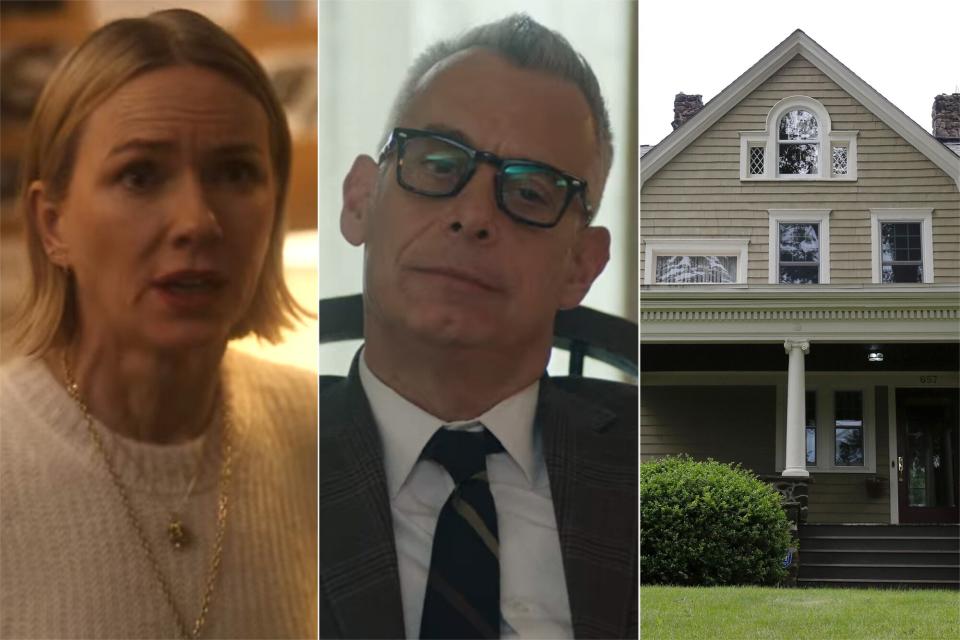
Netflix (2); Julio Cortez/AP/Shutterstock Dissecting the true story behind 'The Watcher.'
Did someone calling themself "The Watcher" really torment a New Jersey family?
Yes. There wouldn't be the TV series without this foundational true crime story. As outlined in a 2018 piece published by The Cut, Derek and Maria Broaddus (portrayed by Cannavale and Watts as Dean and Nora Brannock in the series) moved into 657 Boulevard (the same address used in the program) in Westfield, N.J., in 2014 before they received a string of bone-chilling letters from an anonymous stalker claiming to be a protective "Watcher" of the building. The ordeal turned into a years-long saga involving dramatic clashes with an odd assortment of neighbors and extreme paranoia festering among the Broadduses and their children.
Though their names were changed for the series, which heavily embellishes other details of their lives and horror story, The Watcher writers incorporated real text from the letters sent to the Broadduses, including the bits about the Watcher desiring "young blood."
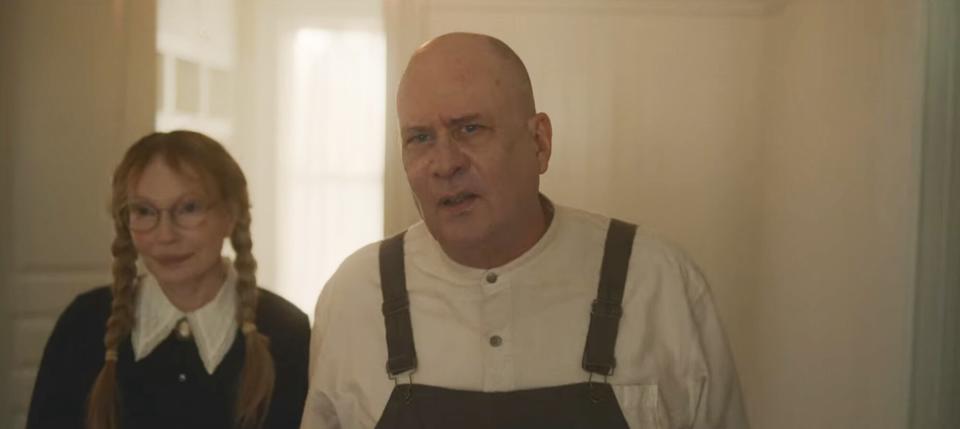
Netflix Mia Farrow and Terry Kinney in 'The Watcher'
Are creepy neighbors Jasper and Pearl based on real people?
Seemingly, yes. In the show, Jasper (Terry Kinney) and Pearl Winslow (Mia Farrow) are the first set of peculiar neighbors that Nora and Dean meet upon arriving in Westfield. Instead of formally greeting them, Jasper meets the family after pulling his head out of a dumbwaiter and launches into a disturbing assertion about the human skeleton, telling them that a baby skeleton has "100 more bones than an adult skeleton." He pops up several times throughout the series, mostly after entering the private residence without permission — the Brannocks' son finds him hiding in the dumbwaiter at night, and he often wanders across their property line without permission, though Pearl promises the prior owners allowed him to explore at his will.
Pearl and Jasper seemed to be based on the Langford family, described as "a bit odd" in the Cut piece. Siblings Michael — who'd been diagnosed as a schizophrenic — and Abby Langford had lived in the neighboring house with their mother, Peggy, since the 1960s, and the Broadduses initially speculated that Michael was the behind the letters, though several police interviews with him didn't produce prosecutable evidence to support their suspicions.
And, while it's a nice touch that leads to some effective scares in the series, there's no mention of a dumbwaiter inside 657 Boulevard in the original article.
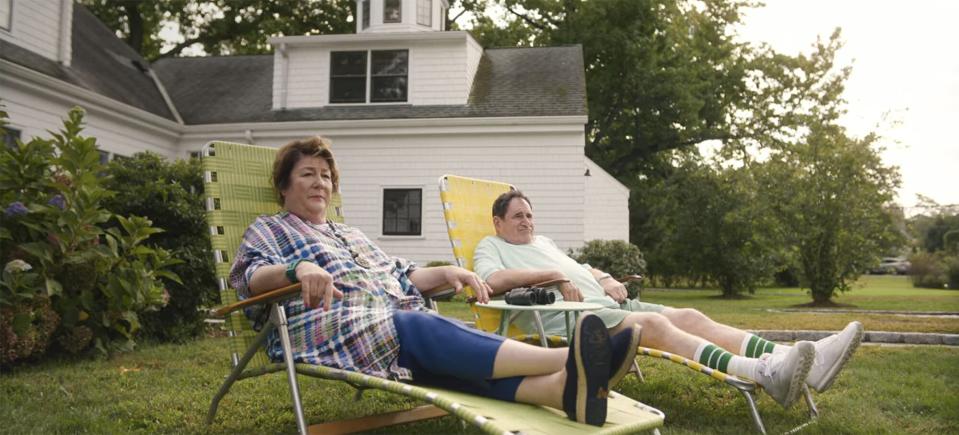
Netflix Margo Martindale and Richard Kind as Mo and Mitch in 'The Watcher'
Mitch and Mo: Did neighbors actually watch the family from lawn chairs, and were they in a baby-eating blood cult?
Yes, but thankfully only the first part. Characters Mitch (Richard Kind) and Mo (Margo Martindale) balance effective comedic relief (there's nothing funnier than the latter calling her neighbors "motherf---ers" while standing at the Brannocks' fence with her husband in matching tracksuits) with genuine scares through their multi-episode arc on the show, and their actions are also based on those of real people.
Bill Woodward, the Broadduses' housepainter, reported that he saw the couple who lived behind 657 Boulevard sitting on a pair of lawn chairs facing the family's home.
"One day, I was looking out the window and I saw this older guy sitting in one of the chairs," Woodward told The Cut. "He wasn't facing his house — he was facing the Broadduses.'"
There is not, however, evidence to support that, as one character accuses, the real-life couple was ever involved in a satanic cult that killed babies to drink their blood.
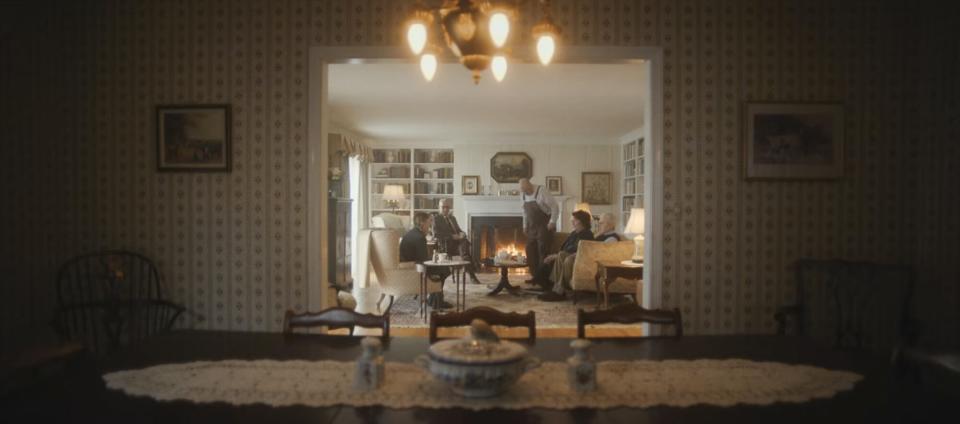
Netflix The Westfield Preservation Society in 'The Watcher'
Was Pearl's Westfield Preservation Society real?
Not quite, but there was a Westfield Planning Board, which facilitated complications for the Broadduses after the family announced a proposal to sell the property to a developer who'd split it into two separate lots for new homes. The Cut reported that 100 locals showed up to a Planning Board meeting in January 2017, though, unlike Pearl, their issue wasn't with butcher block countertops or 657 Boulevard's internal aesthetics.
The real-life gathering morphed into a three-hour hearing, with some neighbors expressing concern over everything from the threat of knocking down trees (hello, Pearl!) to voicing distaste over the thought of the new houses having displeasing front-facing garages. Abby Langford also spoke at the meeting, stressing that she'd "spent almost 60 years looking at a magnificent, beautiful house" and didn't "want to be looking out at a driveway."
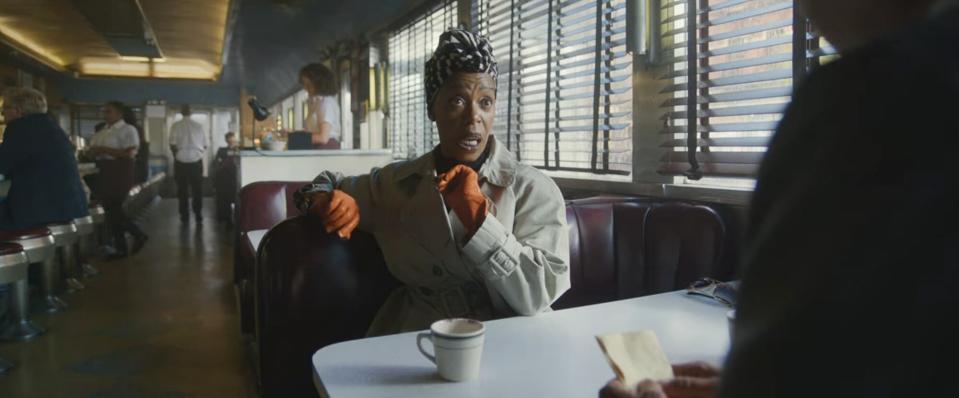
Netflix Noma Dumezweni as Theodora Birch in 'The Watcher'
What about Theodora Birch? Did a cancer-stricken private investigator assist in the search?
As fabulous as Noma Dumezweni is as Theodora Birch, sadly, the jazz-singer-turned-private-investigator who helps the Brannocks sniff the Watcher's trail appears to be a fictional icon. The Broadduses did hire a private investigator to snoop on their behalf, but The Cut's piece makes no mention of said sleuth being a gorgeous British woman with impeccable taste in coats and gloves.

ERIC LIEBOWITZ/NETFLIX Jennifer Coolidge in 'The Watcher'
Surely, Jennifer Coolidge's pink-loving Westfield real estate agent, Karen, is an actual human being?
Nope. Country clubs and zero-dressing salads occupied no real space in the Broadduses story. But, you can soothe your soul by watching Karen call Nora a "c--t" in episode 7 — perhaps the best line delivery in the history of television — on a loop to get your fix for chaotic women.
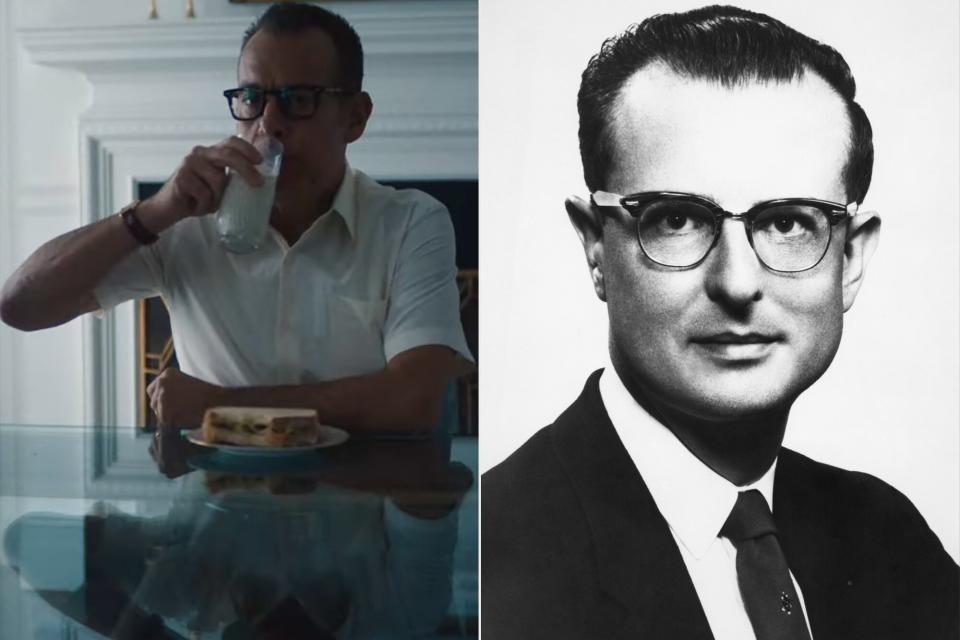
Netflix; Bettmann/Getty 'The Watcher' episode 3 murder sequence involving John Graff (Joe Montello) is based on the real John List family murders of 1971.
Was the John Graff murder sequence inspired by a real story?
Shockingly, yes. After a mysterious man enters the Brannock home claiming to be a property inspector, Dean begins to suspect that the man is actually an on-the-run mass murderer who killed his entire family inside 657 Boulevard. Theodora's research uncovers that a past resident, John Graff, received menacing letters from the Watcher as well, which preceded a grisly crime that saw him shoot his wife in the back of the head before killing his mother on the second floor of the house. He then waited for his daughter to return home from school before shooting her, and ultimately traveled to his son's basketball game, drove him back to the house, and shot him when they walked through the door. Between the slayings, John calmly eats a sandwich and washes it down with a glass of milk.
It might seem like a fictional bloodbath concocted for TV, but John Graff was inspired by the real crimes of John List, who, on Nov. 9, 1971, killed his family in identical fashion. Like Graff, List similarly lost his job, and gradually bled out his mother's savings before killing her and his wife inside their house. He also ambushed two of his children when they returned home from school, and it's rumored that he made himself lunch between the killings, after which he reportedly traveled to his oldest son's soccer game and shot him later that night.
List went on the run, and wasn't captured until an episode of America's Most Wanted chronicled his crimes. A woman who saw the show told authorities she thought her neighbor, a churchgoing accountant named Robert Clark, looked like the image of List she'd seen on the show. Clark turned out to be List, who'd built a new life for himself in the Virginia suburbs. He was arrested in 1989, convicted and sentenced to five life terms in prison. He died in 2008 as a result of complications from pneumonia.
The Watcher creatively weaves List's story into the central tale with some fabrications, as List — who murdered his family 33 years before the Broadduses purchased 657 Boulevard — was never directly involved in the letter incident, even though he killed his wife, mother, and children in the same New Jersey town.
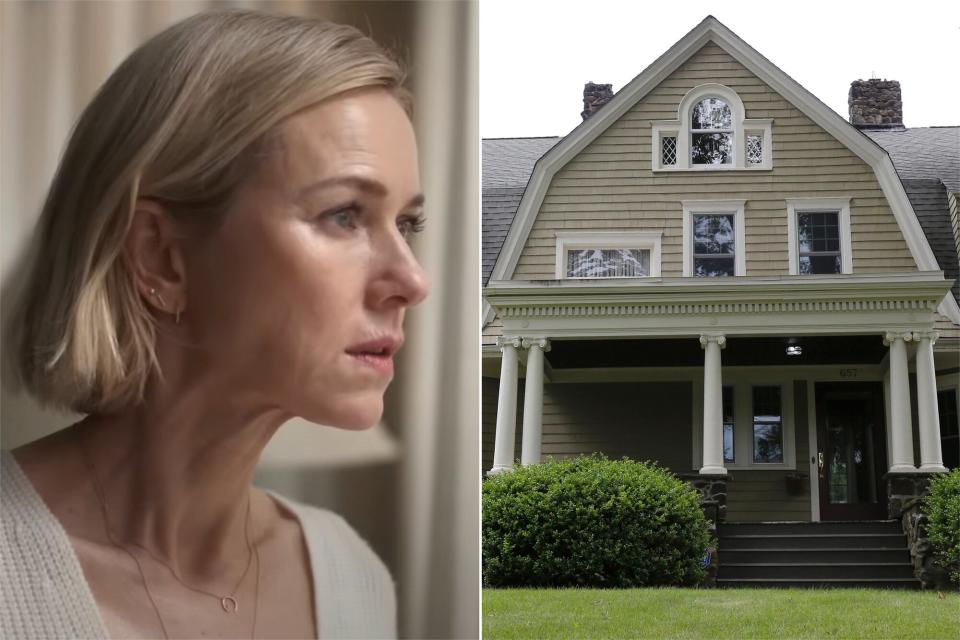
Netflix; Julio Cortez/AP/Shutterstock See the real house from 'The Watcher'
The finale: Did they ever find the real Watcher, and what happened to the house?
Murphy's series finishes with a chilling title card noting that "The Watcher case remains unsolved." While the seven-episode show is a work of fiction loosely based on real events, that part is true. The person — or people — sending letters to the Broaddus family was never caught.
Derek and Maria Broaddus made a home elsewhere, and it took them five years to formally sell 657 Boulevard, though renters inhabited the space for some time. The house still stands, and the listing agent who eventually sold it to a young couple in 2019 for $959,000 (nearly $400,000 less than what the Broadduses paid for it in 2014) tells EW he had to overcome significant "stigma" attached to the house in order to find a new buyer.
"That was our biggest hurdle: Trying to get over that stigma. Plus, you had people riding by the house, taking pictures, walking up to the front door, it was crazy," David Barbosa, owner of David Realty Group, says, adding that he required potential purchasers to meet with an attorney to sign off on knowing the full history of the property before putting in an offer.
One man, whom Barbosa remembers confidently told him that he didn't "give a s---" about the hostile letters the Broadduses received, backed out after delving deeper into the case: "He went down to the attorney's office and called me and said, 'Yeah, I'm out.' He just said, 'Listen, after reading everything, there's no way I'm going in that house,'" Barbosa says with a laugh.
The series' final moments expand upon the last words of the Cut article; the show ends with Dean keeping tabs on his former home and lying about his whereabouts on a phone call with Nora, who's revealed — moments later — to be scoping out the neighborhood as well, while the article finishes with Derek admitting that the intrusive thoughts the Watcher conjured within him, even after they moved on from the house, felt "like cancer" every day. The piece ends with a quote from the fourth letter: "You are despised by the house. And The Watcher won" — both works pay tribute to this sentiment, albeit in different ways.
Check out our daily must-see picks — plus news, celeb interviews, trivia, and more — on EW's What to Watch podcast.
Related content:
The true story behind Naomi Watts' new The Watcher series is legit nightmare fuel
See photos from inside the real Watcher house that inspired Naomi Watts' horrifying TV show
You won't sleep after seeing disturbing Watcher trailer with Naomi Watts in a stalker's hell house
Naomi Watts teases her return to horror in 'freaky' Ryan Murphy Watcher series

